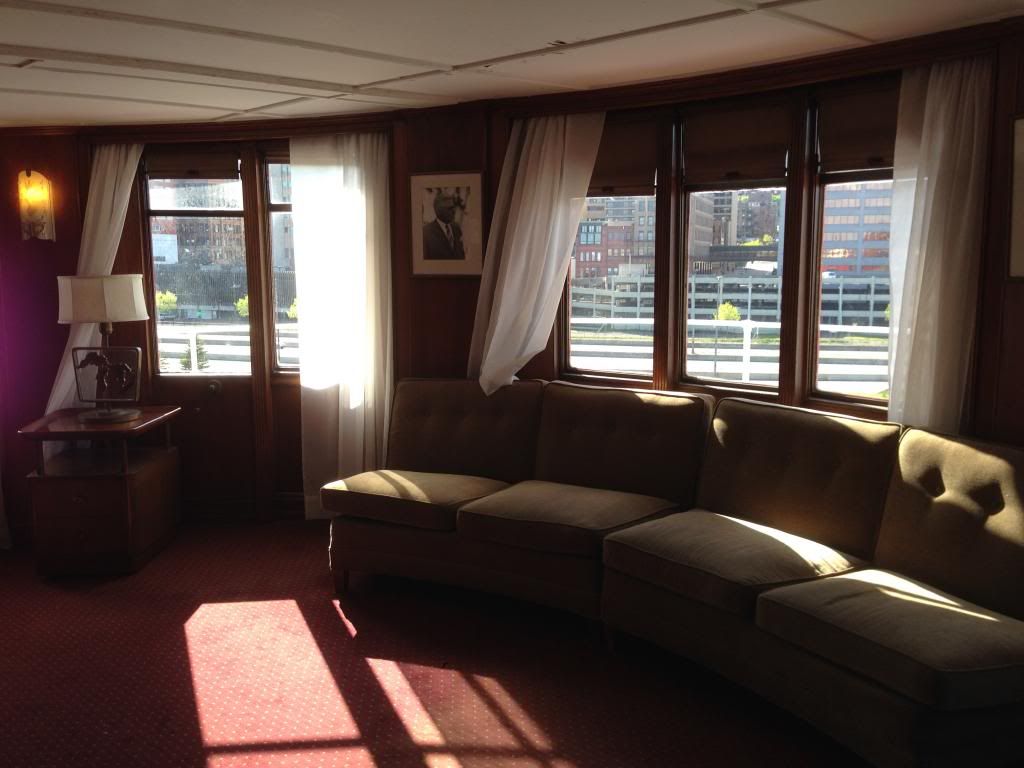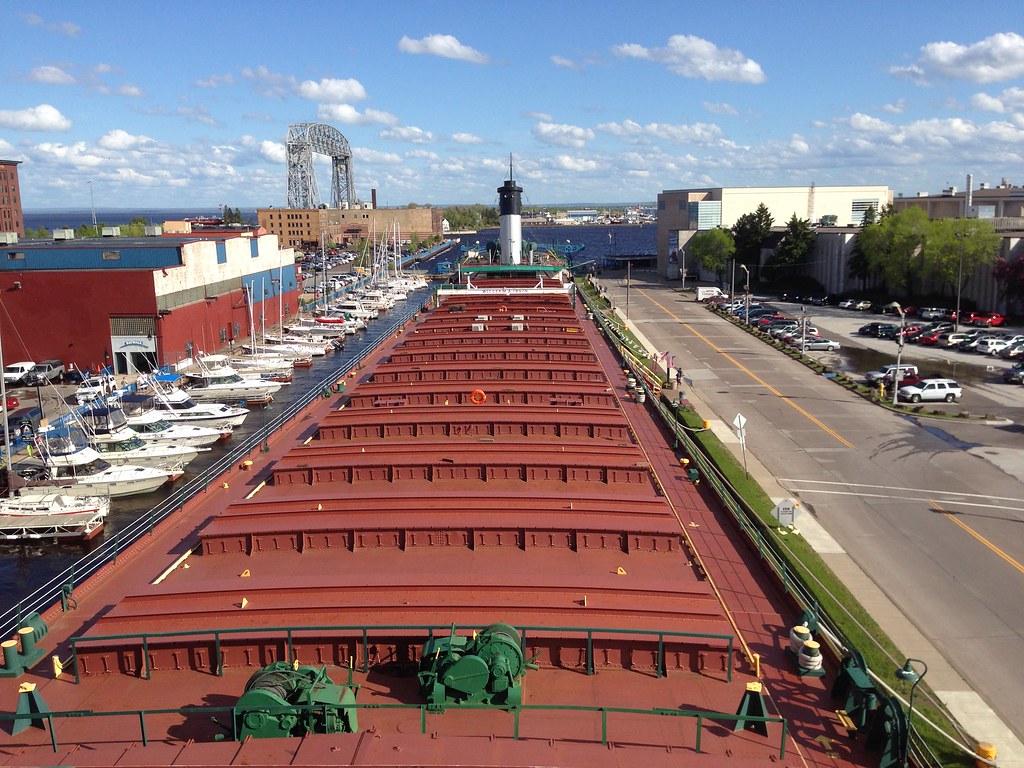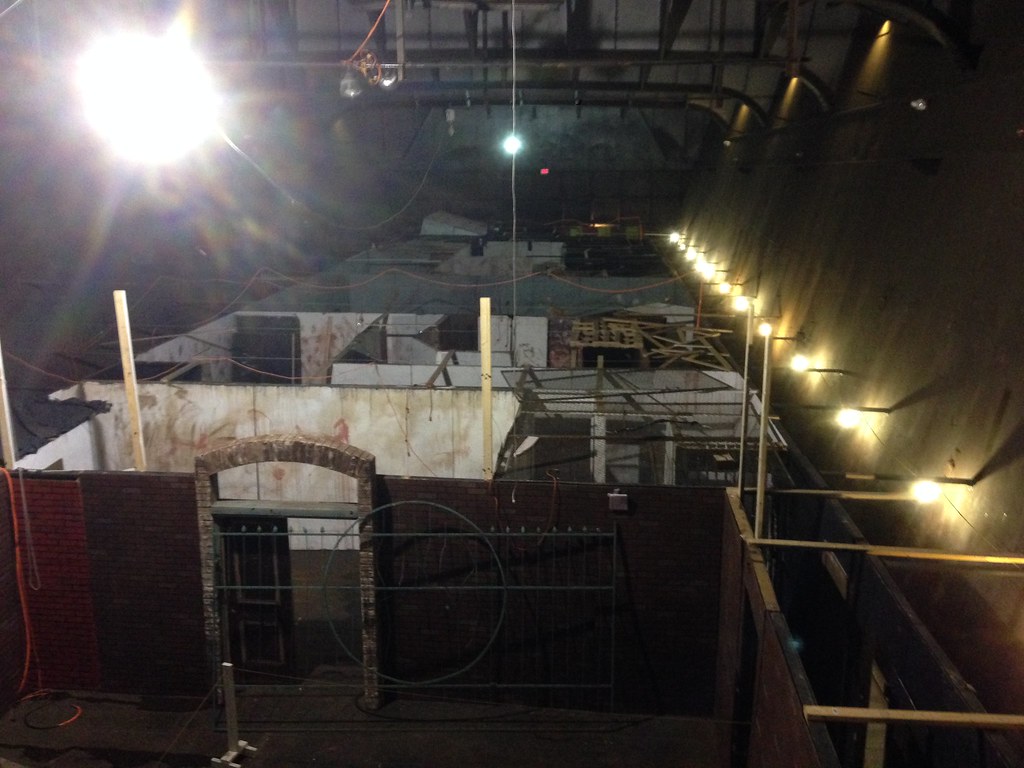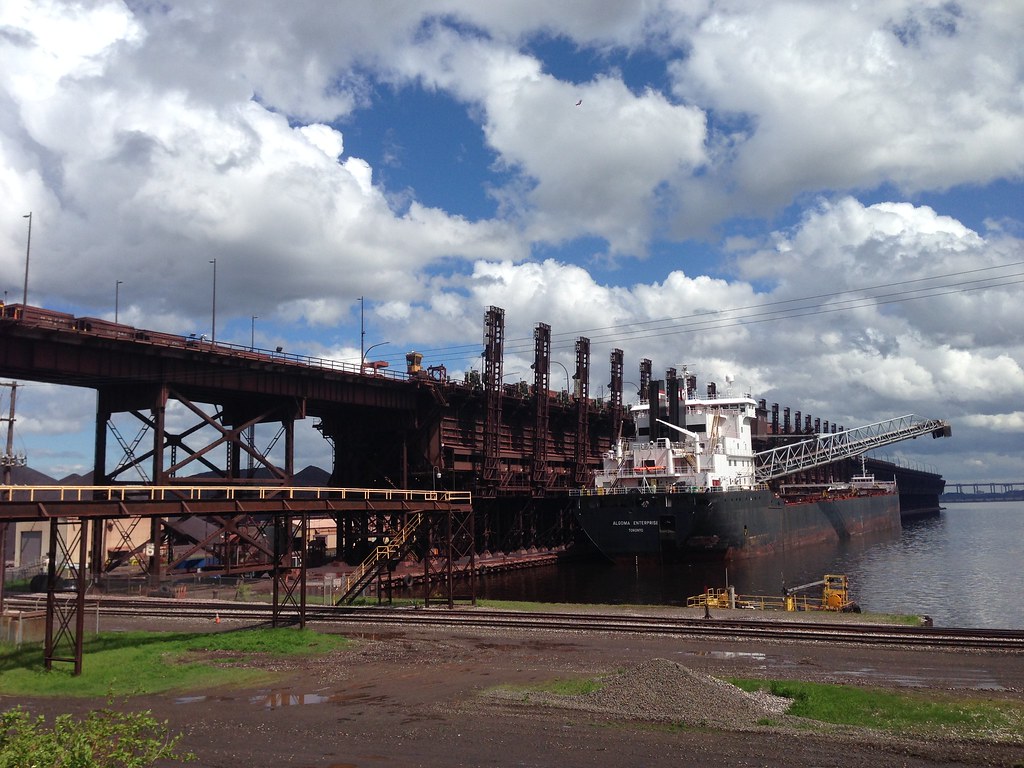Post by Ferryman on Aug 23, 2014 15:32:15 GMT -8
On the West Coast, I've noticed that the average person probably doesn't even acknowledge the presence of a Freighter. They seem to blend in with the scenery, and are just part of the every day things going on, just like everything else. The majority, if not all of the freighters out west are foreign owned, flagged, and crewed ships. But on the Great Lakes, a lot of the freighters, also known as "Lakers" are domestically owned, Canadian and American.
To get you up to speed with the terminology, here are the basics. The technical name for Lakers that are able to transit all of the Lakes and St. Lawrence Seaway are "Seawaymax" ships. On deep sea freighters, they are broken down into different classes as well, ie: Panamax (maximum size of ship that can transit the Panama Canal), Capemax (able to sail around Cape Horn), Suezmax (maximum size of ship to transit the Suez Canal) are a few examples. Back to Lakers; The Seawaymax ships are a maximum size of 225.5m (740')LOA, and 23.790001m (78') beam which just barely fit into the Eight locks on the Welland Canal (between Lakes Erie and Ontario), as well as the eight locks on the St. Lawrence River. Additionally, you have larger ships, all American owned, that operate strictly on the Upper Lakes, Lakes Erie, Huron, Michigan, and Superior. Those ships are more commonly known as Thousand Footers, because they are typically about one thousand feet in length. The first Thousand Footer that was built for the Great Lakes, is known as the M.V. Stewart J. Cort (1000'x105' or 300m x 32m), and he/she proudly displays a "1" on her superstructure. However, the absolute largest ship on the Great Lakes is the M.V. Paul R. Tregurtha (1013'x105' or 309m x 32m). The TV Show, Mighty Ships did a presentation of the Tregurtha in one of their episodes as well. Another point worth mentioning, are the locks at Sault St. Marie, Michigan on the St. Mary River between Lake Superior and Lake Huron. The nickname for the locks there is known as "The Soo", and there are four locks, all side by side for different sizes of ships. Only one is large enough to handle the Thousand Footers.
Other names to be aware of with Lakers are:
-Bulk Carriers. Ships that carry only dry bulk cargo such as coal, grain, iron ore, etc.
-Self Unloaders. They have their own equipment to unload their cargo and are easily identified by their long boom that's stowed on deck
-Straight/Flat Backs. No equipment on board to unload the cargo and require equipment from shore to unload the cargo
-Forward Enders. The "Classic Laker" design having some accommodations and the Wheelhouse up forward, and the rest of the accommodations back aft for the Galley
-Back Enders. All accommodations and the Wheelhouse are located at the aft end.
-Tankers. Ships that carry liquid cargo, normally crude oil or diesel.
-Salties. Deep sea cargo ships, normally foreign flagged/crewed, that can also be considered as Seawaymax vessels that primarily export cargo to other parts of the world
For more info about Lakers themselves, see: en.wikipedia.org/wiki/Lake_freighter
What impresses me the most about the Great Lakes Freighters is the culture among not only the crews, but also with the people who live in the surrounding areas of the Great Lakes. There's a fairly large community of "fans", who are part of the "Boatnerd" community at www.boatnerd.com . It's pretty well guaranteed there is always a Boatnerd sitting on the shores of any of the Rivers, Canal, or Seaway hoping to catch a glimpse of their beloved Laker. The Boatnerd Community of course keeps track of where all the Lakers are coming and going, as well as the latest Gossip of what's happening. They also organize trips to tour various Lakers where they get to travel as a passenger to a couple of the ports. I'd imagine there's a fee that comes along with that of course though. One thing that really impressed me is that every year they publish a book called "Know Your Ships", which will summarize all of the latest happenings of the ships during the previous season, as well as a showcase of the best photographs.
Whenever we're at a lock that has a public viewing platform, such as Lock #3 in the Welland Canal, or the Soo Locks, there are always curious onlookers no matter what time of the day. Tourists always yell out to the crew on deck, who are trying to help guide the ship into position for the lock, wondering where the ship is coming/going and where the crew members themselves are from. But at the very least, people of all ages and always without fail, will wave out to a Laker Passing by. Also in Sault St. Marie Michigan, there are attractions such as motels shaped like a Classic Laker, or large murals which depict a Classic Laker Sailing by, typically the mighty Edmund Fitzgerald. In a separate post, I'll show a couple of the Museums in Duluth Minnesota that I had a chance to see that reflect on the history of the Great Lakes ships.
Okay, before I bor everyone to tears, I better add some photos, and I'll continue to add more photos to this thread to show some of the variety of ships on the Great Lakes
The First ship I'd like to show off, is the "Algoma Enterprise", and in my opinion she is a fine workhorse for the Algoma Fleet, not that I'm bias or anything

Built in 1979 in St. Catharines, Ontario as the "Canadian Enterprise" for Upper Lakes Shipping Group. In Feb 2011, Upper Lakes Shipping Group and most of the assets were purchased by Algoma Central Corporation, which was when she was renamed "Algoma Enterprise". Self Unloading Bulk Carrier, 222m (730') x 23.12m (76'). For more info and photos:
www.boatnerd.com/pictures/fleet/canadianenterprise.htm
Here she is tied up at Warf 16 in Port Colborne (Southern of the Welland Canal) and taking on provisions to last for two weeks on the lakes.
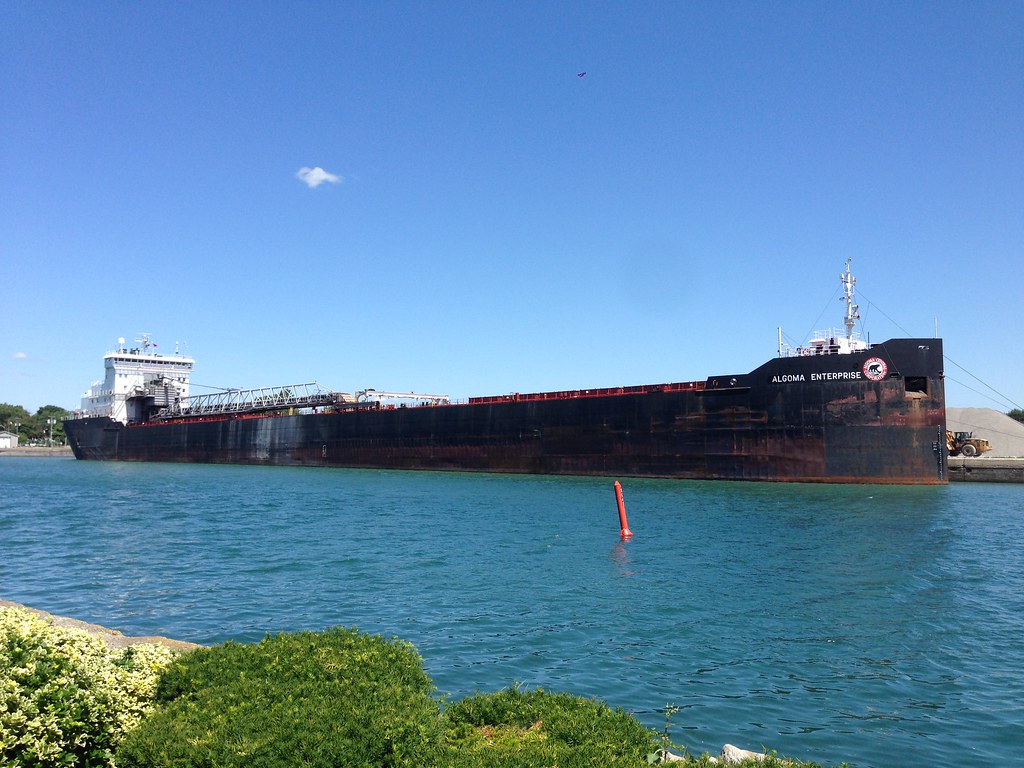
Algoma Enterprise by Deck-dog SSI, on Flickr
The Algoma Enterprise has a near identical sister ship, which is called the Algoma Transport. As you can see, she has the Algoma Colour scheme now, and the Enterprise still has the black hull that is reminiscent of the Upper Lakes Shipping colour scheme. www.boatnerd.com/pictures/fleet/canadiantransport.htm Here she is heading up the Welland Canal.
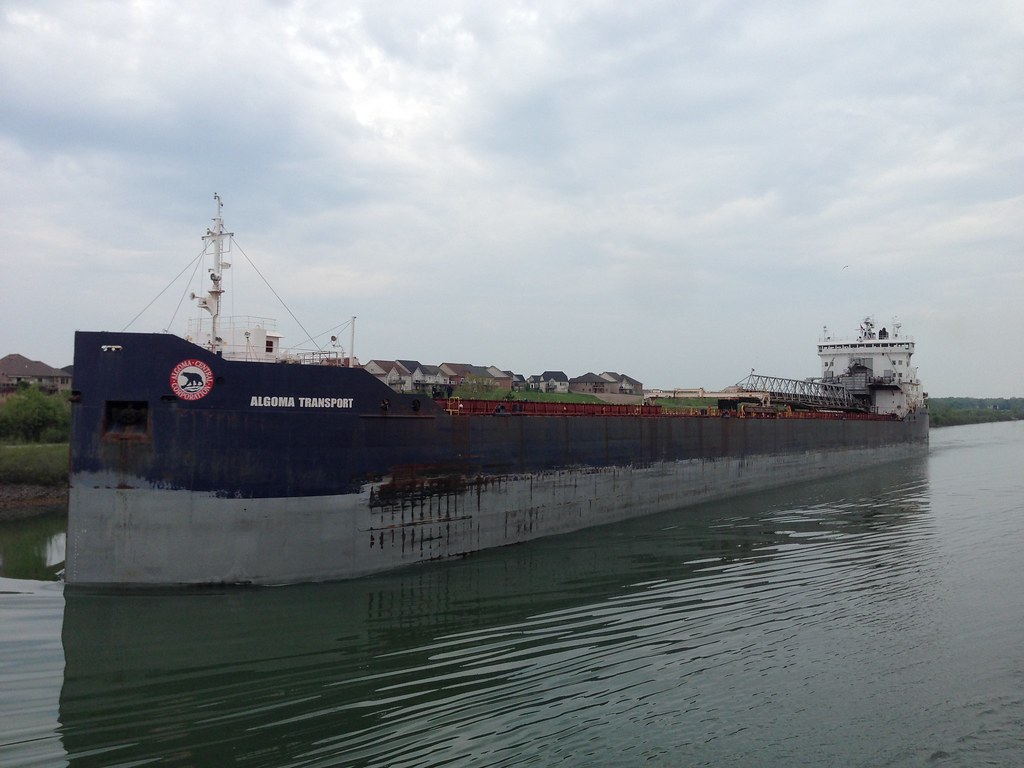
Algoma Transport by Deck-dog SSI, on Flickr
One ship that caught my attention was another ex Upper Lake Shipping vessel, now owned by Algoma, called the S.S. Algoma Montrealais (yes, she's a Steamship). This summer is slated to be her last season on the Great Lakes, and then is scheduled to be retired and scrapped. Her sister, S.S. Algoma Quebecois was retired this year. Last year was actually supposed to be the Montrealais's last season, but she was needed again this year. I don't have a picture of her yet, and I doubt I'll be able to get one before I leave. But I have been keeping tabs on the progress of her sistership being scrapped in Port Colborne, Ontario. Montrealais link: www.boatnerd.com/pictures/fleet/montreal.htm
Photos of the Quebecois scrapping in Port Colborne.

ex Algoma Quebecois being scrapped by Deck-dog SSI, on Flickr

ex Algoma Quebecois being scrapped by Deck-dog SSI, on Flickr
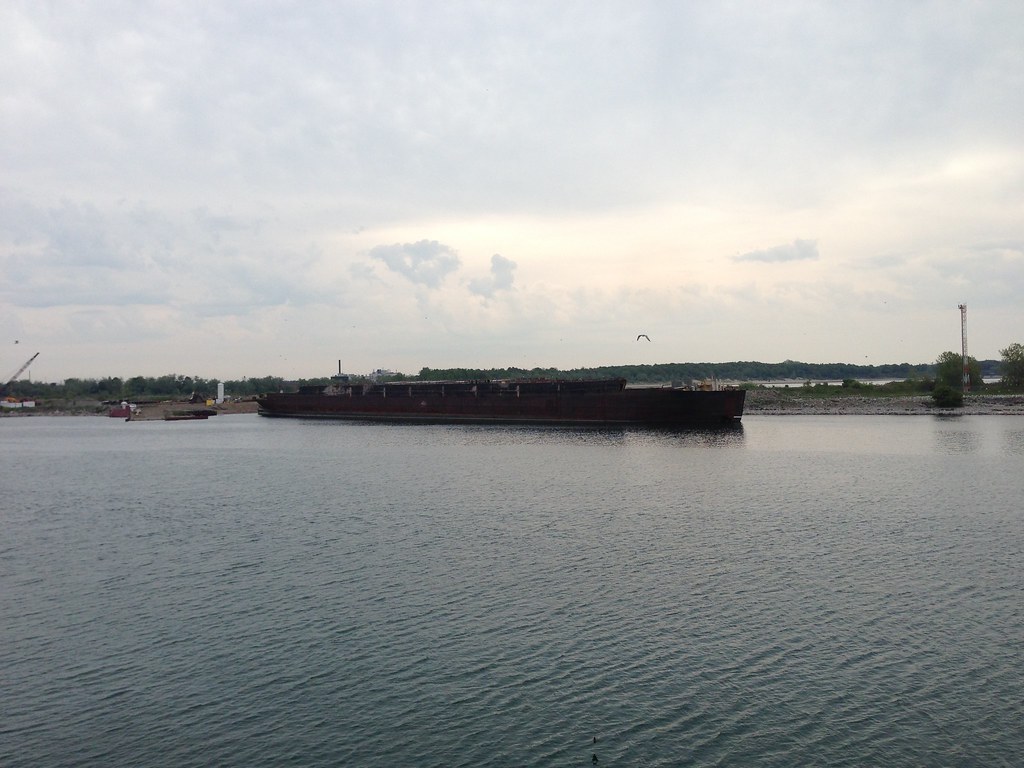
Algoma Quebecois by Deck-dog SSI, on Flickr
Canada Steamship Lines "Baie St. Paul". She's one of CSL's newest ships and is part of the "Trillium Class", which was constructed in China. Here she is unloading in Cote Saint Catherine, Quebec.
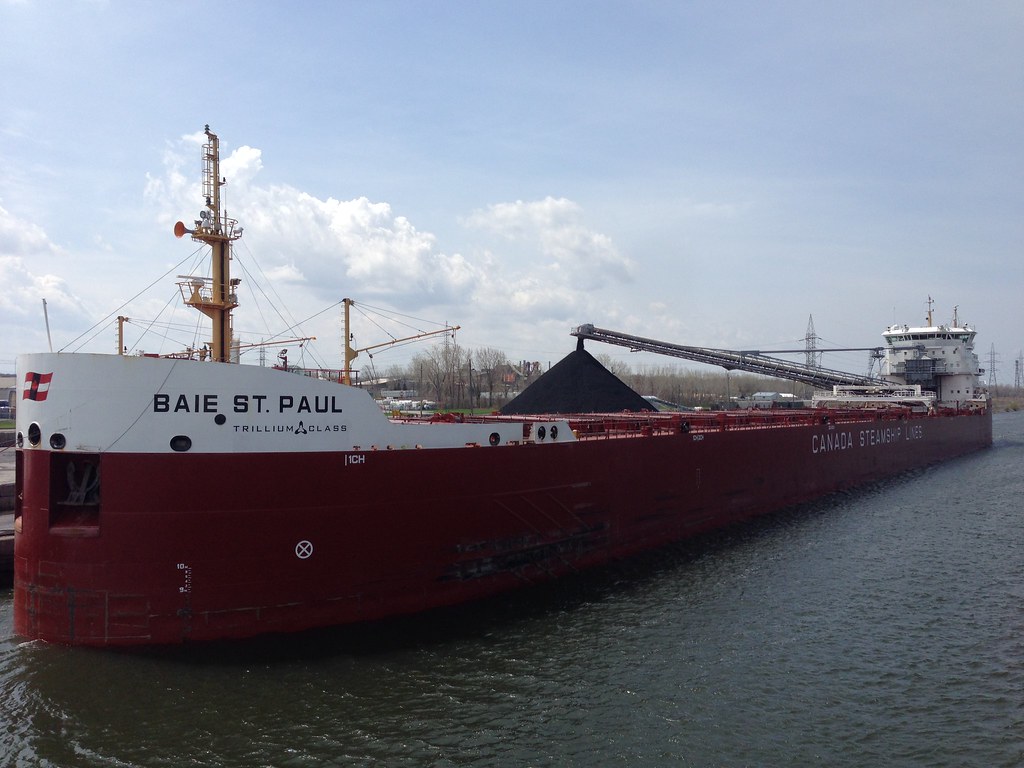
CSL Baie St. Paul by Deck-dog SSI, on Flickr
Classic Laker, "SS Saginaw" from Lower Lakes Towing Company. Here she is entering the Rouge River in Detroit, Michigan.
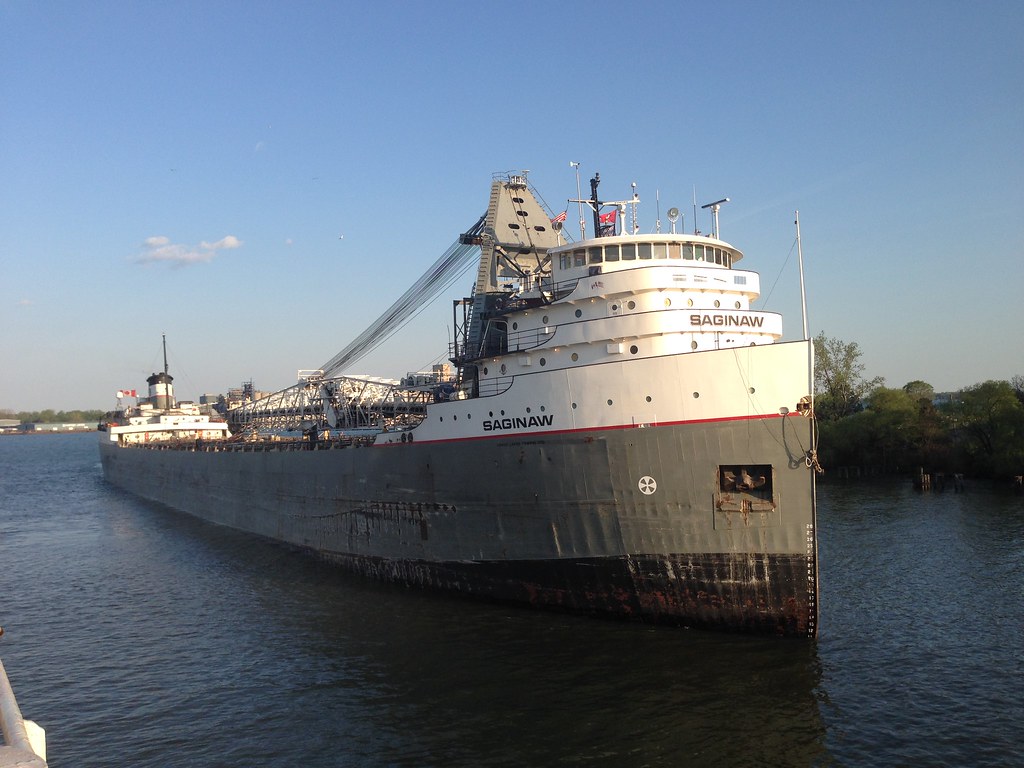
SS Saginaw by Deck-dog SSI, on Flickr
One more for now. American Steamship Company's "St Clair", which is one of the Thousand Footers on the Lakes.
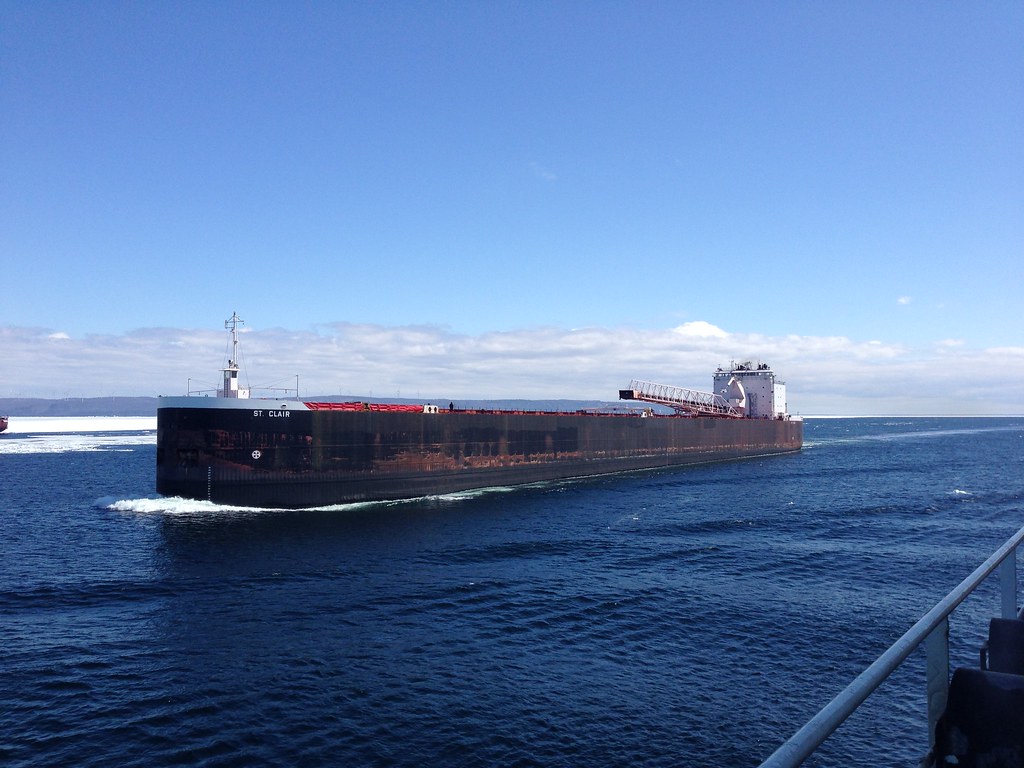
American Bulk Carrier, MV St. Clair by Deck-dog SSI, on Flickr
Stay tuned for more!













